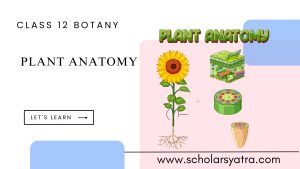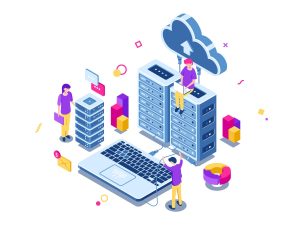Zinc compounds are a diverse group of chemical substances containing the element zinc, which has an atomic number of 30. Zinc is a transition metal, and it typically exists in the +2 oxidation state in its compounds. These compounds are widely used in various industries due to their chemical properties, including their roles in corrosion resistance, biological processes, catalysis, and materials science.
Table of Contents
ToggleLet’s get started with some zinc compounds in detail with their basic overview, properties, application & uses, and preparation methods.
Some Common Compounds of zinc
Zinc oxide (ZnO)
Zinc oxide is an ionic compound consisting of Zn²⁺ cations and O²⁻ anions. It typically crystallizes in two forms: hexagonal (wurtzite) and cubic (zincblende). The wurtzite structure is the most common in nature.
The synonyms of zinc oxides are as follows:
- zinc oxide
- zinc(II) oxide
The oxidation number of zinc in zinc oxide is 2.
- Formula: ZnO
- Hill system formula: O1Zn1
- Formula weight: 81.389
- Class: oxide
- Colour: white
- Appearance: crystalline solid
- Melting point: 2248°C; 1975°C
- Boiling point: sublimes at 1800
- Density: 5600 kg m-3
Element analysis
| Element percentages in zinc oxide | |
| Element | % |
| O | 19.66 |
| Zn | 80.34 |
Zinc oxide constitutes 19.66% of oxygen and 80.34% of zinc in it.
Preparation
- It is prepared by heating zinc in the presence of air.
2Zn + O2 → 2ZnO
- It is also prepared by heating the compound of zinc i.e. zinc carbonate (ZnCO3), zinc hydroxide {Zn(OH)2}, zinc nitrate {Zn(NO3)2}.
ZnCO3 → ZnO + CO2
Zn(OH)2 → ZnO + H2O
2Zn(NO3)2 → 2ZnO + 4NO2 + O2
Physical properties
- It is white fibrous powder.
- It is insoluble in water.
Chemical properties
- It reacts with both acid and base to form salt and water.
ZnO + HCl → ZnCl2 + H2O (reaction with acid)
ZnO + NaOH → Na2ZnO2 + H2O (reaction with base)
- Reaction with cobalt nitrate: it reacts with cobalt nitrate to form cobalt zincate. It is known as Rinman’s Green.
2ZnO + 2CO(NO3)2 → 2COZnO2 + 4NO2 + O2
Rinman’s green
Uses
- Used as white paint.
- Used for preparing Rinman’s green pigment.
- Used for preparing other compounds of green.
- Antimicrobial properties, making it useful in personal care products.
Zinc sulphate (ZnSO4.7H2O) or White vitriol
Zinc sulfate is an ionic compound, typically existing as the heptahydrate form (ZnSO₄·7H₂O), but other hydrates and the anhydrous form also exist.
The synonyms of zinc sulphate are as follows:
- zinc sulphate heptahydrate
- zinc(II) sulphate 7-water
- zinc sulfate 7-water
- zinc sulfate heptahydrate
- zinc sulphate 7-water
- zinc(II) sulfate 7-water
The oxidation number of zinc in zinc sulphate heptahydrate is 2.
- Formula: ZnSO4.7H2O
- Hill system formula: H14O11S1Zn1
- Formula weight: 287.561
- Class: Complex
- Colour: white
- Appearance: crystalline solid
- Melting point: 100°C (dehydrates)
- Boiling point: decomposes at > 500
- Density: 1957 kg m-3
Element Analysis
| Element percentages in zinc sulphate heptahydrate | |
| Element | % |
| H | 4.91 |
| O | 61.2 |
| S | 11.15 |
| Zn | 22.74 |
Zinc sulphate constitutes 4.92% Hydrogen, 61.20% oxygen, 11.15% sulphur and 22.74% zinc in it.
Preparation
- It is prepared by heating zinc sulphide below 800 in the presence of air.
ZnS + 2O2 → ZnSO4
- White vitriol can also be prepared by heating zinc (Zn), zinc oxide (ZnO), and zinc carbonate (ZnCO3) with dilute H2SO4
Zn + H2SO4 → ZnSO4 + H2 ↑
ZnO + H2SO4 → ZnSO4 + H2O
ZnCO3 + H2SO4 → ZnSO4 + H2 O + CO2
On crystallization crystals of white vitriol can be obtained.
ZnSO4 + 7H2O → ZnSO4.7H2O
Crystals of white vitriol are obtained.
Physical properties
- It is a colourless crystalline solid.
- It is soluble in water.
- Slightly acidic solution.
Chemical properties
- Action with heat: On heating, it loses its water of crystallization and finally gets converted into zinc oxide.
ZnSO4.7H2O → ZnSO4.6H2O → ZnSO4.H2O → ZnSO4 → ZnO + SO2 + O2
On heating white vitriol at 70, it loses one water of crystallization and on further heating at 100 loses five more water of crystallization and at 300 loses all seven water of crystallization and when heated further over 800 it gets converted into zinc oxide.
- Action with barium sulphate: Zinc sulphate when treated with barium sulphide, double salt called lithopone is obtained.
ZnSO4 + BaS → BaSO4 + ZnS (both products are combined and called lithopone)
- Reaction with NaOH: when few amount of NaOH is used then white ppt. of zinc hydroxide is obtained and if excess NaOH is used sodium zincate is obtained.
ZnSO4 + NaOH → Zn(OH)2 + Na2SO4 (Limited amount of NaOH is used)
Zn(OH)2 + NaOH → Na2ZnO2 (excess amount of NaOH is used)
- Reaction with H2S: On passing H2S gas over zinc sulphate solution white ppt. of zinc sulphide is obtained.
ZnSO4 + H2S → ZnS + H2SO4
Uses
- Used for making lithopone.
- Used for preparing oxides of zinc.
- Used in medicine as an eye lotion.
- Used in agriculture to correct zinc-deficient soils.
Galvanization
Galvanization is the process of coating zinc over iron to prevent rusting galvanization prevents rusting of iron in the following ways:
- It acts as a barrier between iron and moisture.
- By sacrificial or cathodic protection: in his process, zinc acts as an anode and iron acts as the cathode. They form a galvanic cell. In this process, Zn alone gets corroded preventing iron from rusting. So, this method is also called sacrificial protection.
Methods of galvanization
- Pickling: At first the iron articles to be galvanized are cleaned and then washed with dilute HCl to remove oxide films if present. After this galvanization is done by following methods:
- Hot dip galvanization: iron articles are dipped into a hot bath of molten zinc by which a thin coating of zinc is made of the articles.
- Sherardising: The iron article is mixed with zinc dust and heated for several hours rotating the drum. Bolts, screws etc can be sheradised by zinc.
- Metallising: In this method, the zinc is coated over the iron article by spraying molten zinc over it. This method is used for ships, bridges etc.








2 Responses
It seems so easy to understand
express gratitude miss!